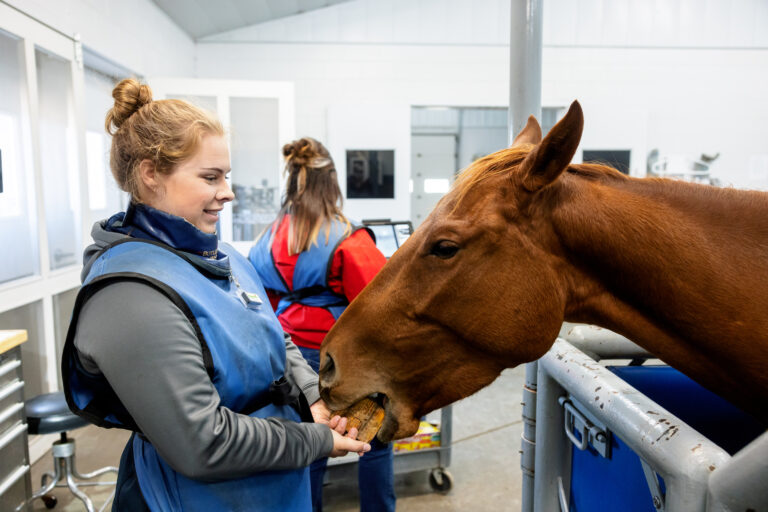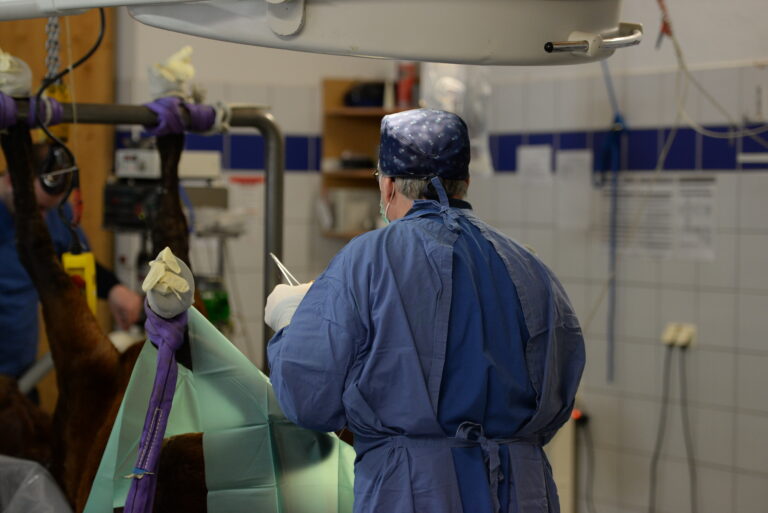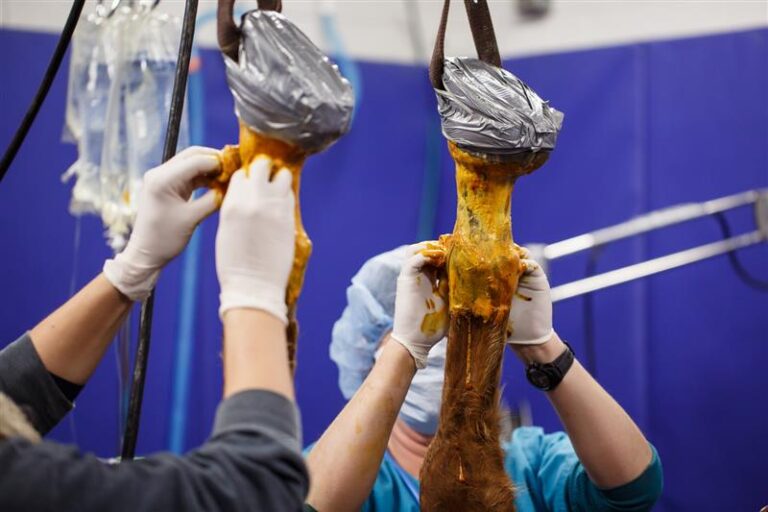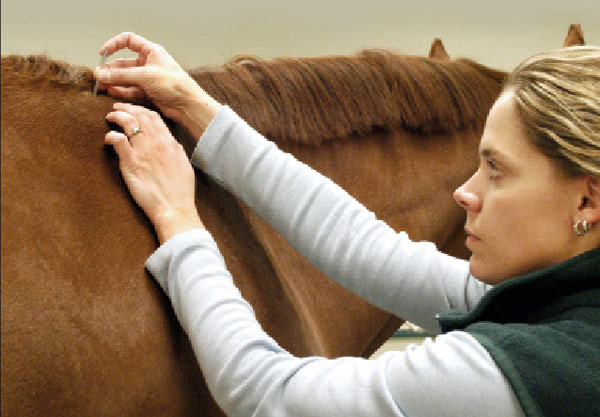
There are two components of profitability: revenue and expenses. The revenue that your business generates is called the “top line” of your business.
The costs of operating the business are called the “expenses” of your business.
The money remaining from the revenue after expenses are subtracted is called the “bottom line” of your business.
Prior to the “great recession,” equine practitioners could rely on more owners and more horses requiring more veterinary services each year to yield significant growth in their top lines each year.
The economic environment in which the horse industry finds itself is, by and large, the result of a shrinking number of both horses and horse owners. Demand for equine veterinary services is lower than it has historically been. The law of supply and demand is a law we cannot revoke. As demand lowers, so lower the top lines of equine practices.
Traditionally, in a low demand/high supply market place, the only new customer is one you win away from a competitor. That is an expensive and emotionally charged process for all involved. That strategy often results in price wars in which veterinarians commoditize their profession and hope to make up for losing money on a procedure by doing the procedure on more horses. Providing acupuncture and/or chiropractic work to customers in your area might be your next successful profit center, but you must ensure that it can be profitable.
Occasionally a “new service” arrives on the equine veterinary scene, creating more demand for that veterinary service from the current pool of horses and owners. “New” is a relative term. New in the technology world might be a product accepted by early adopters in a matter of weeks. In equine veterinary medicine, new pharmaceutical products are often accepted as quickly as technology creates them. Demand for a veterinary service, however, is often measured in years or maybe even in decades.
To the majority of horse owners, acupuncture and chiropractic work, although definitely not new services, have become in demand “overnight.” Horse owners in virtually every discipline of competition, as well as those with pleasure horses, are looking to their veterinarians for acupuncture and chiropractic work in an effort to help manage their horses’ comfort and performance. Voila: A “new veterinary service” is in demand.
Should I Add the Service?
Every week I speak with a veterinarian who is considering attending either an acupuncture course or a chiropractic course, or both. The most common question is, “How much does it cost to bring acupuncture or chiropractic expertise to my practice?”
The answer is a little more complex than many of the decisions we make. If we need a new digital radiography system, we know how many X-ray images we acquire in a year. We know how much the equipment costs and how much we charge per image or study. We might need a little training on the new equipment, but it is minimal. With that information we can make an educated decision on the purchase.
It is quite different to add a novel service to your practice. In order to provide acupuncture or chiropractic services, there is extensive training involved. Before we decide to launch a new service, we must determine the cost of tuition, travel, lodging, days away from practice, daily veterinarian compensation and daily veterinary production. This calculation must include the opportunity cost of attending the program. Opportunity cost is the revenue that was not earned due to time spent in training. Given those facts, we can evaluate the total cost of acquiring the new expertise. Using those costs, we can calculate the volume of work necessary to break even (no profit) and the volume of work necessary to produce a profit.
Calculating Costs
The following tables are examples of cost analyses of both acupuncture and chiropractic courses. Table 1 shows a detailed breakdown of the costs that should be considered in undertaking a training course. In these charts, blue highlighted numbers are input numbers, red highlighted numbers are break-even and profitability milestones, and numbers with no highlighting are calculated numbers. In order to create the models, I used productivity and compensation values that are representative of well-managed, profitable practices.
Once we know the cost of training for this example, acupuncture program #1, we can make some break-even calculations based on pricing and volume necessary to support the investment in training.
Using the same model to look at several programs, this is a summary of the estimated costs associated with three acupuncture programs and one chiropractic program, in addition to the break-even (no profit) and 15% profitability milestones.
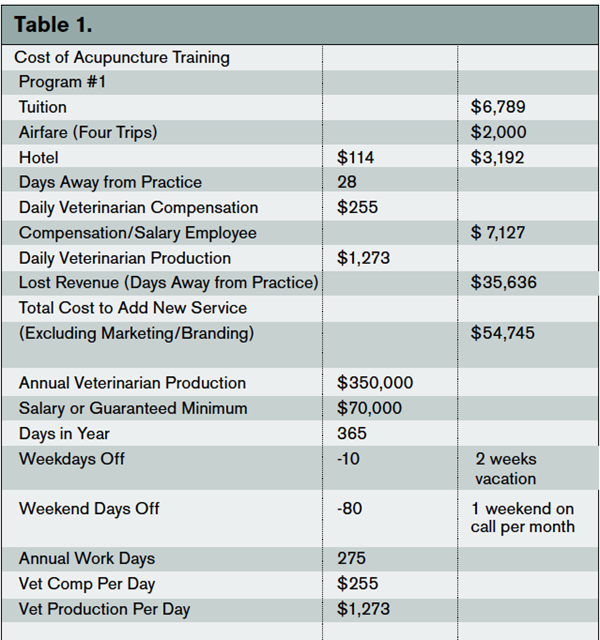
Planning for the New Service
A challenging piece of developing a strategic plan is to decide which training program to choose. Looking at the cost and profitability summaries of each of the three acupuncture programs, Course #3 is significantly less expensive and will be profitable at a much lower number of procedures. If training were a commodity, we should all choose Course #3. However, training is not a commodity and it is critical to remember: Price is what you pay and value is what you get. Your task is to critically evaluate the cost-to-benefit relationship for each program. How much profit will your business generate from the new service you add? The practical question is, “How well does each program train you for the market you intend to enter?”
That is a tough question to answer. It will involve discussions with the program directors at the various courses, veterinarians who have completed the courses and some horse owners who have experience with these services. Veterinarians are trained to be scientists and this sort of qualitative market research is not intuitive for us. In order for the new service to be successful, this homework cannot be avoided.
A critical second piece of your strategic plan for your novel service is to design and implement a branding and marketing program specifically for the new service. You can offer the most awesome new service imaginable, but if no one knows about it, it will fail. Branding your novel service is an implied promise that the level of quality people have come to expect from your practice will continue. You make the promise wherever your clients look for information. That might be a website, social media, web forums, print media or maybe even the Yellow Pages. It doesn’t need to be complicated; you simply tell the story of the service you now offer as well as some situations in which it can benefit the patient.
Branding and marketing is another discipline that is also not intuitive for most veterinarians. This might be an excellent time to seek professional help. If you are near a college or university, it may be possible for your branding program to be completed as a marketing student project.
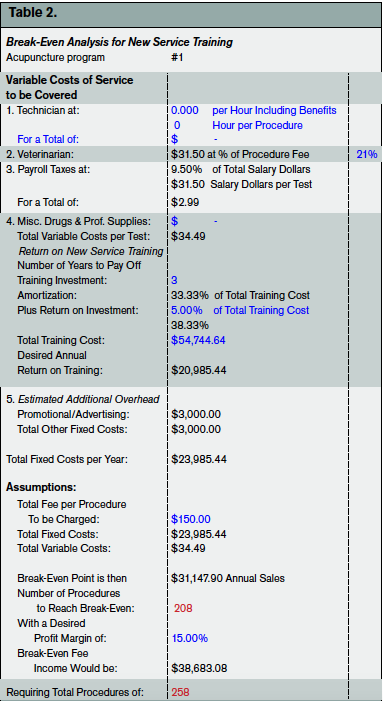
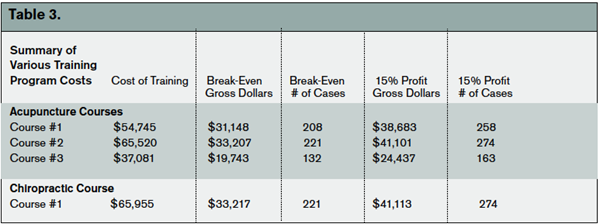
Take-Home Message
Just like any portion of your business, you must make an educated decision about the cost-to-benefit ratio of a new service to your bottom line and your clientele. Walking through the steps outlined in this article can help, but you also must determine the need for the service(s) in your area, the competition and the cost of acquiring the knowledge and equipment to provide the services. And when that is all done, you must properly market your new service in order to monetize the education in which you have invested for yourself or one of your partners.

